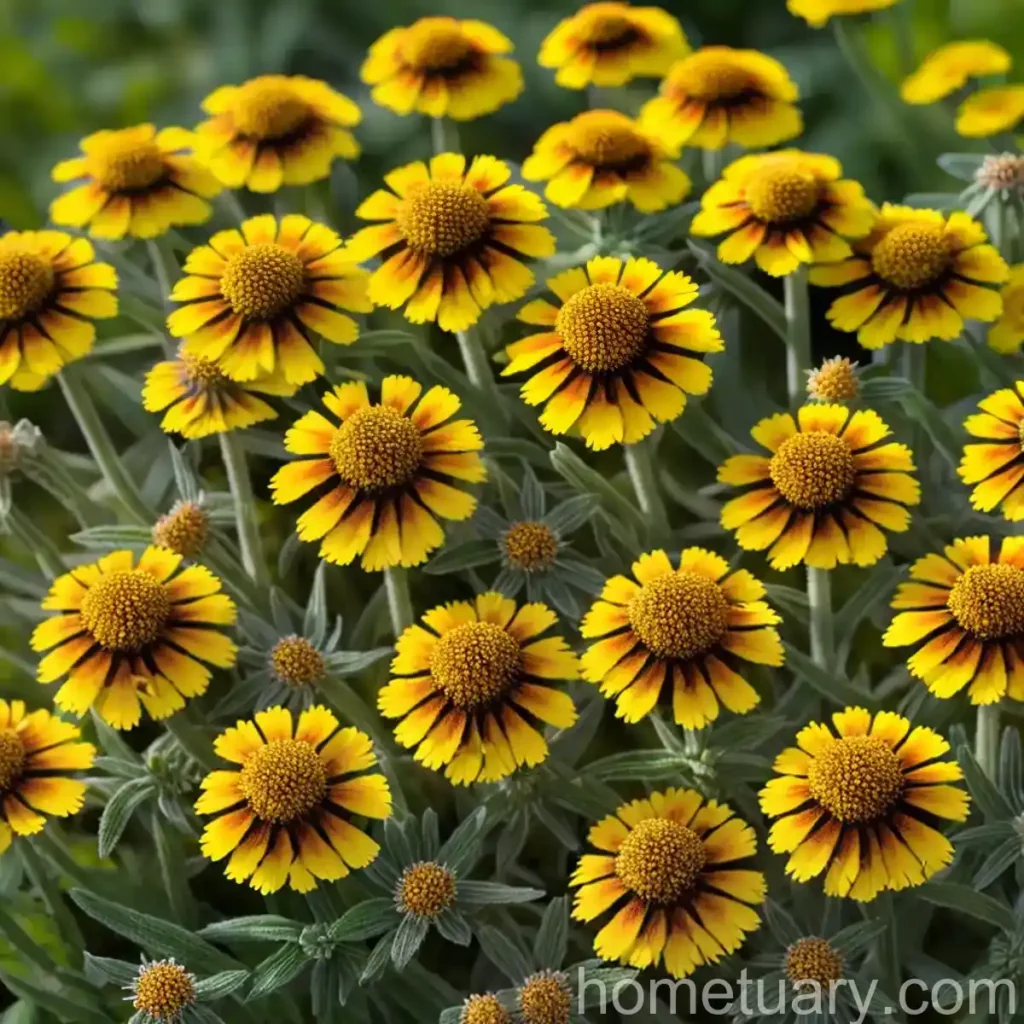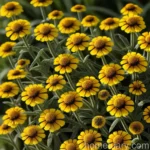Plant Profile: Helenium ‘Wyndley’ – The Vibrant Sneezeweed
Helenium, commonly known as sneezeweed, is a charming perennial plant that brings vibrancy to gardens with its profusion of colorful daisy-like blooms. This article will delve into the intricate details of caring for the Helenium ‘Wyndley’ variety and explore its cultural significance, uses, care requirements, and much more.
What is Helenium ‘Wyndley’?
Helenium ‘Wyndley’ is a cultivated variety of the Helenium genus, characterized by its stunning display of coppery-red to gold flowers that bloom from mid to late summer. Its upright habit and dark green foliage provide an excellent backdrop for the eye-catching blooms. This perennial plant is a member of the Asteraceae family and is native to North America.
Key Takeaways
Let’s take a quick look at some key points to remember about the Helenium ‘Wyndley’:
- Botanical Name: Helenium ‘Wyndley’
- Common Name: Sneezeweed
- Bloom Time: Mid to late summer
- Flower Color: Coppery-red to gold
- Foliage: Dark green
- Habit: Upright
Now that we’ve introduced the star of our discussion, let’s dive into the intricate details of caring for this captivating plant.
Culture
Uses
Sneezeweed is a versatile plant that can be utilized in various ways:
- Ornamental: Its stunning blooms make it a popular choice for adding color to gardens and landscapes.
- Cut Flowers: The long stems make sneezeweed an excellent choice for cut flower arrangements.
Water
Like most plants, proper watering is essential for the health and vigor of Helenium ‘Wyndley’. Here are some key points to keep in mind regarding its water requirements:
- Moisture: Sneezeweed prefers consistently moist soil, especially during the growing season.
- Watering Frequency: Water deeply when the soil begins to dry out, particularly during dry spells.
Sunlight
Sneezeweed thrives in locations with ample sunlight, and providing the right amount of sunlight is crucial for its overall development:
- Sun Exposure: Plant sneezeweed in a location that receives full sun to part shade.
- Optimal Hours: Aim to provide at least 6-8 hours of direct sunlight daily for the best flowering display.
Fertilizer
To support healthy growth and abundant blooms, proper fertilization is essential for sneezeweed:
- Fertilizer Type: Use a balanced, all-purpose fertilizer or one formulated for flowering perennials.
- Application: Apply fertilizer in early spring and again in midsummer for continuous nourishment.
Soil
The soil composition plays a vital role in the overall well-being of sneezeweed:
- Type: Sneezeweed thrives in well-draining, moderately fertile soil.
- pH Level: It prefers a slightly acidic to neutral soil pH, ideally ranging between 6.0-7.0.
Pruning
Pruning is an important aspect of sneezeweed care, as it helps maintain the plant’s shape and encourages prolific blooming:
- Deadheading: Regular deadheading of spent blooms can promote continuous flowering.
- Cutting Back: In late spring, consider cutting back the stems to encourage bushier growth and more flower buds.
Propagation
If you wish to expand your collection of sneezeweed or share this delightful plant with others, propagation comes into play:
- Division: Divide mature clumps in early spring to create new plants.
- Seed Propagation: Sow seeds indoors in early spring or outdoors in early summer for new plant starts.
Container Popularity
Sneezeweed also thrives in containers, making it a versatile choice for both garden beds and container plantings:
- Container Size: Use a sufficiently large container to accommodate the plant’s growth habit and root system.
- Soil: Ensure the potting mix is well-draining and rich in organic matter.
Common Diseases
Sneezeweed may encounter certain diseases that can impact its health and aesthetic appeal:
- Powdery Mildew: Keep an eye out for signs of powdery mildew, particularly in humid conditions, and treat as needed.
- Leaf Spot: Maintain good air circulation and avoid overhead watering to minimize the risk of leaf spot diseases.
Disease Diagnosis
Identifying and addressing potential diseases promptly is crucial for the well-being of sneezeweed:
- Symptoms: Look for visual cues such as spotted or discolored leaves, powdery coating on foliage, and wilting.
- Treatment: Utilize appropriate fungicides or cultural practices to address specific diseases.
Common Pests
Several pests may target sneezeweed, impacting its growth and overall vitality:
- Aphids: Keep an eye out for aphids, particularly on new growth, and employ natural predators or insecticidal soaps if necessary.
- Thrips: Monitor for thrips and take preventive measures to mitigate their impact on the plant.
Botanist’s Tips
As a botanist, here are some additional tips to enhance the growth and beauty of Helenium ‘Wyndley’:
- Mulching: Apply a layer of organic mulch around the base of the plant to retain moisture and suppress weeds.
- Companion Planting: Pair sneezeweed with other sun-loving perennials such as coreopsis, black-eyed susan, and coneflowers for an eye-catching display.
Fun Facts
Wrapping up our exploration of sneezeweed, here are some intriguing fun facts about this enchanting plant:
- Butterfly Attraction: Sneezeweed’s bright blooms are known to attract butterflies, adding a delightful touch to garden landscapes.
- Native American Use: Historically, certain Native American tribes utilized sneezeweed for medicinal and ceremonial purposes.
Links to External Resources
For further insights into sneezeweed care, propagation, and overall management, explore the following external resources:
- The Spruce – How to Grow Helenium
- RHS – Helenium ‘Wyndley’ Care
- Fine Gardening – Helenium Cultivation
- Missouri Botanical Garden – Helenium Plant Care
In conclusion, Helenium ‘Wyndley’ is an exemplary choice for gardeners seeking a captivating and low-maintenance perennial plant. By paying attention to its cultural requirements, utilizing proper care practices, and leveraging the insights shared here, you can foster the flourishing growth of this delightful sneezeweed variety in your own garden.
Happy gardening!
As an avid plant scientist and enthusiast, I thoroughly enjoyed delving into the captivating world of sneezeweed and Helenium ‘Wyndley’. If you have any questions or require further information, feel free to reach out. Here’s to fostering the beauty of nature one bloom at a time!















